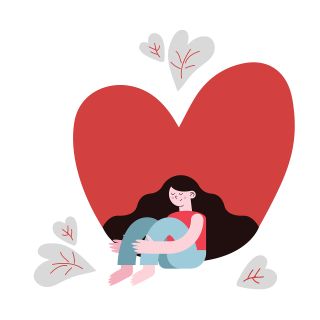Mindfulness & Mental Health
The Ultimate Guide to Positive Psychology Findings
Our daily search for happiness often starts in the wrong place. The most powerful positive psychology findings show that lasting well-being comes less from chasing peak moments and more from how we relate to others, our body, and our inner world. This guide turns cutting-edge research into clear, practical steps you can use today.
Key insight: A happier life is built, not found—through intentional habits, compassionate self-awareness, strong relationships, and aligned daily choices.
The Science of Positive Psychology in Everyday Life
Positive psychology is the scientific study of what helps individuals and communities thrive—not by ignoring pain, but by understanding how strengths, meaning, and connection support us through both joy and difficulty.
At its core, it asks: What creates a "good life" that is emotionally rich, mentally resilient, and ethically grounded? Modern research emphasizes:
- Connection over isolation as a primary driver of happiness.
- Meaningful experiences (not just relief from problems) as catalysts for growth.
- Daily habits in sleep, movement, and mindset as foundations for mental health.
These positive psychology findings bridge science and real life, showing that flourishing is a learnable, repeatable process.
Latest Research: What Do Positive Psychology Findings Reveal?
Below is a concise snapshot of influential research shaping how we understand happiness and resilience today:
-
Growth from both hardship and joy
- Mangelsdorf et al. (2019) found that highly positive experiences can fuel meaningful personal development when we actively reflect on them.
-
Flexible resilience
- Bonanno et al. (2024) describe resilience as diverse patterns of healthy adaptation, rather than one fixed trait profile.
-
Self-compassion and regulation
- Gilbert (2014) shows how compassion-based practices help balance threat, drive, and soothing systems in the brain, supporting emotional stability.
-
Movement and mood
- Large-scale reviews (Harvard, 2024) confirm regular physical activity rivals standard treatments for mild to moderate depression for many people.
-
Social connection and well-being
- Longitudinal work from Stanford researchers continues to link high-quality relationships with longer life, better mental health, and higher life satisfaction.
These data-backed insights form a practical roadmap for better living.
How Do Positive Psychology Findings Work in Real Life?
Positive psychology findings are not abstract theories; they operate through clear mechanisms:
- Attention: What we notice (gratitude, strengths, progress) shapes how we feel.
- Meaning-making: How we interpret events determines whether they drain us or grow us.
- Regulation: Skills that calm the body and refocus the mind reduce stress and increase clarity.
- Connection: Supportive relationships act as buffers against anxiety, burnout, and loneliness.
- Behavioral alignment: Tiny daily actions—sleep, food, movement, kindness—signal safety and purpose to the nervous system.
When habits, relationships, and beliefs align, well-being becomes more stable and less dependent on external highs.
1. Post-Ecstatic Growth: Using Joy as a Catalyst for Change
We often associate growth with adversity, but research shows positive experiences can transform us just as powerfully when we pause to extract meaning.
This "post-ecstatic growth" happens when you:
- Celebrate a success, then ask what it reveals about your values.
- Treat joyful milestones (graduation, promotion, new city, recovery) as starting points for better habits.
- Use moments of pride or gratitude to redefine what matters next.
Featured snippet answer (approx. 45 words): Positive psychology findings reveal that growth does not require suffering. When we intentionally reflect on joyful experiences—what enabled them, what they mean, and how they align with our values—we unlock "post-ecstatic growth": sustainable motivation, stronger identity, and deeper appreciation for our lives.
Practical reflection prompts:
- What recent positive experience shifted how you see yourself?
- Which strengths did you use to create that moment?
- How can you repeat or expand those conditions this month?
2. People Also Ask: What Is Resilience in Positive Psychology?
Resilience is the capacity to adapt, recover, or grow in response to stress or change—without having to be invincible or emotionless.
Modern positive psychology findings emphasize that resilience is:
- Individual: What works for one person may not for another.
- Dynamic: It can change with context, resources, and season of life.
- Learnable: Skills and systems can be built over time.
3. Resilience Part 1: Designing Your Personal Resilience Blueprint
Bonanno et al. (2024) highlight that there is no single "resilient personality type." Instead, resilience is a constellation of unique protective factors—habits, beliefs, relationships, environments—that fit your life.
To uncover your pattern, look for moments when you struggled but coped better than expected. Then identify what helped.
Try this 4-step micro-audit:
- Name one tough period you navigated reasonably well.
- List what supported you (sleep, humor, deadlines, faith, pets, routines, mentors).
- Highlight 3 that felt most powerful.
- Intentionally rebuild those supports now—before the next challenge.
New examples:
- A nurse staying grounded during night shifts by debriefing with coworkers and scheduling 10-minute walks between tasks.
- A student handling exam stress through structured study blocks, phone-free mornings, and weekly dinners with friends.
Bold move: Treat your coping patterns as data. Replicate what worked instead of guessing.
4. Resilience Part 2: Why Strong Support Beats Solo Strength
Resilience is not a solo performance. Stanford researchers and resilience experts emphasize that being resourced often matters more than being "tough."
Think beyond willpower:
- People do better when they can access mentors, friends, financial advice, childcare, community spaces, or mental health support.
- Many who feel "not resilient" are actually under-resourced, not deficient.
Key reflection questions:
- What do I need to handle this situation 10% better?
- Which support, if added (or used), would change everything?
- Who already cares about me that I haven’t asked for help?
"Needing support is not a weakness; it is a feature of how human resilience works."
Action steps:
- Create a "support map" listing 5 people or services you can lean on.
- Practice one proactive reach-out per week, even when you’re okay.
- Offer help when you can—reciprocal networks make everyone stronger.
5. People Also Ask: What Is Self-Compassion in Positive Psychology?
Self-compassion is treating yourself with the same clarity, accountability, and kindness you’d offer someone you genuinely want to see thrive.
In positive psychology, it is a high-impact regulator: it reduces shame, supports motivation, and protects mental health without letting you off the hook for growth.
6. Self-Compassion: Resetting Your Inner Regulation Systems
Paul Gilbert’s work shows that our emotions move across three key systems:
- Threat (anxiety, criticism, self-attack)
- Drive (goals, striving, achievement)
- Soothing (safety, connection, rest)
Many high-achievers are stuck toggling between threat and drive, rarely accessing soothing. Sustainable well-being demands all three.
A simple 3-step self-compassion check-in:
- Identify: "Am I in threat, drive, or soothing right now?"
- Acknowledge: "It makes sense I feel this way"—without dramatizing or dismissing.
- Adjust: Add one soothing action (slow breath, short walk, supportive message, stretching, warm tea).
New example:
- After a difficult presentation, instead of replaying every mistake, you note one thing you did well, one thing to improve, and give yourself 10 minutes to decompress before revising.
Self-compassion is not indulgence; it is an evidence-based strategy for clearer thinking and faster recovery.
7. People Also Ask: How Do Habits Like Sleep and Exercise Affect Happiness?
Short answer: More than most mindset hacks.
Positive psychology findings consistently show that sleep quality, nutrition, and movement are non-negotiable pillars of mood, focus, and resilience.
8. Taking Care of Your Body: The Most Underrated Happiness Strategy
Before overanalyzing your mindset, check the basics. When your body is deprived, every stressor feels bigger.
Research-backed pillars:
- Sleep: Aim for a consistent 7–9 hours with a regular wake time.
- Movement: Even 20–30 minutes of brisk walking most days improves mood and energy.
- Nutrition: Stable blood sugar, whole foods, and hydration support emotional balance.
Featured snippet answer (approx. 45 words): Robust evidence suggests that foundational health habits—adequate sleep, balanced nutrition, and regular movement—are among the most effective ways to improve mood and resilience. In many cases, consistent exercise can reduce depressive symptoms as effectively as first-line medications, especially for mild to moderate depression.
Micro-adjustments you can implement this week:
- Set a "digital sunset" 45 minutes before bed.
- Add one fruit or vegetable and one glass of water per meal.
- Schedule movement like a meeting: non-negotiable, short, realistic.
These small shifts compound into a more stable emotional baseline.
9. Meta-Analysis Insights: What Actually Moves the Needle?
When we zoom out across studies and reviews, several themes keep resurfacing:
- Growth comes from meaning, not just pain. Reflecting on positive events predicts increased purpose and life satisfaction (Mangelsdorf et al., 2019).
- Resilience is flexible, not fixed. People follow multiple healthy adaptation pathways, challenging one-size-fits-all advice (Bonanno et al., 2024).
- Compassion matters. Self-compassion practices are reliably linked with lower anxiety, less self-criticism, and more sustainable motivation (Gilbert, 2014).
- Health behaviors are central. Large bodies of evidence (Harvard, 2024) and Stanford researchers underline exercise, sleep, and social ties as core protective factors.
Together, these findings reinforce a simple message: a happier life is multi-dimensional—and built through repeated small choices.
10. Research-Backed Strategies for a Happier, More Resilient Life
Use these practical, science-aligned strategies to apply positive psychology findings without overwhelming yourself:
Weekly meaning check
- Write down one positive moment from the week.
- Ask: "What does this say about what I value? How can I do more of that?"
Build your resilience ecosystem
- Identify 3 personal strengths and 3 external resources.
- Design one simple ritual that uses both (e.g., morning walk with a friend).
Practice 60-second self-compassion
- Hand on heart, one slow breath, then: "This is hard. It’s human to struggle. I can take one kind step forward."
Protect your physiological foundation
- Choose one anchor habit: a consistent wake-up time, daily light exposure, or a 10-minute walk.
Invest in relationships
- Send one genuine check-in or appreciation message per day.
- Join or re-engage with one community: a class, club, or group aligned with your interests.
11. Expert-Inspired Recommendations for Modern Life (2025)
In a world of constant notifications, comparison, and uncertainty, practical positive psychology must fit real constraints.
Concise expert-aligned recommendations:
- Prioritize depth over volume: a few high-quality relationships beat endless contacts.
- Design friction-free habits: make the healthy choice easier than the default one.
- Normalize asking for help early, not only in crisis.
- Treat joy as data: when something lights you up and aligns with your values, schedule more of it.
- Accept emotional contrast: a good life includes both joy and discomfort, approached with curiosity rather than judgment.
A good life is not perfect. It is one where your actions match your values, your connections are real, your body is respected, and you could say, "If it ended tomorrow, I showed up for what mattered."





